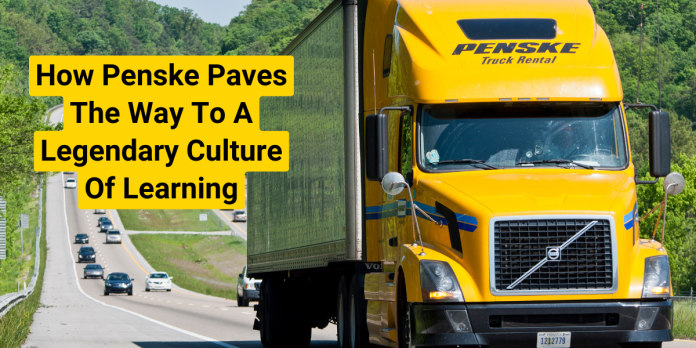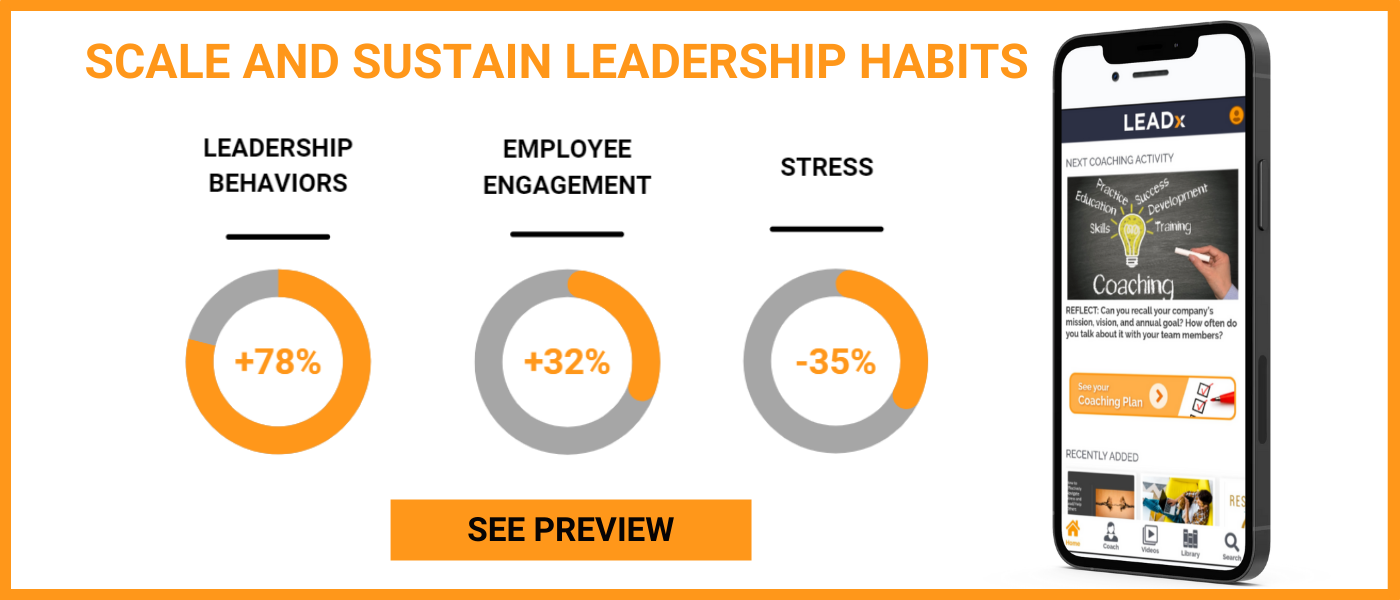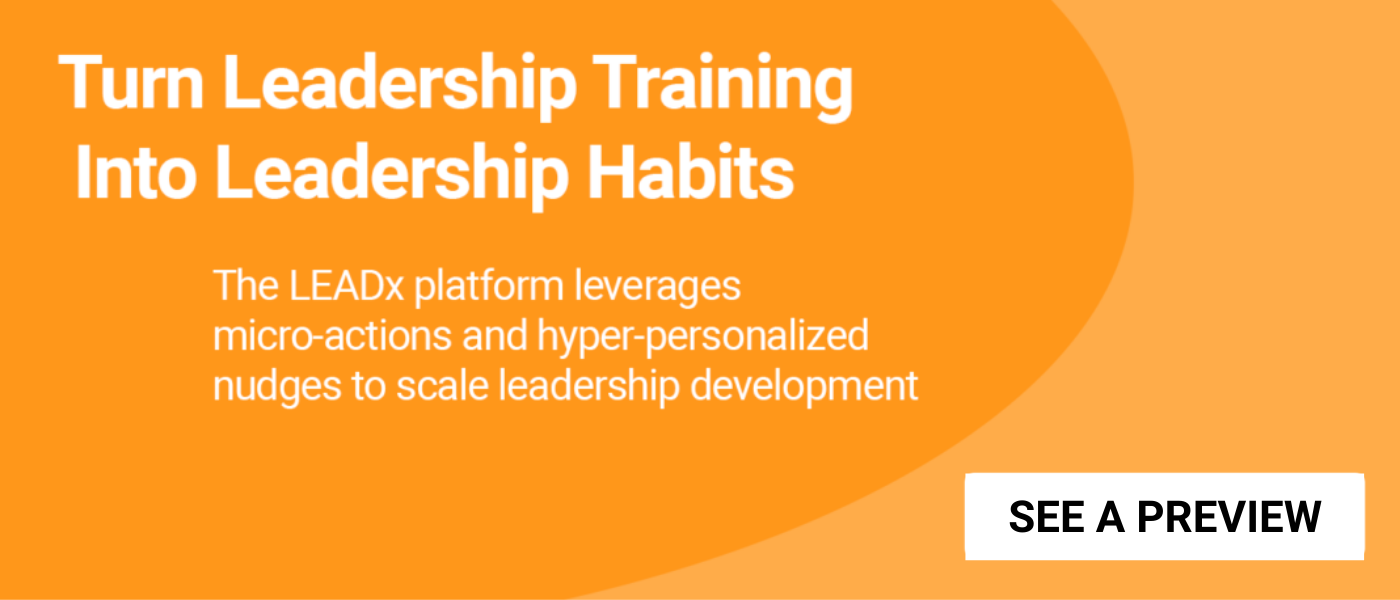
We don’t compete with the same vehicles we used 20 years ago, and we don’t develop talent the way we did 20 years ago, either! — Laura Heaton, VP of Talent Development, Penske Transportation Solutions
 You can hardly leave your house without spotting an iconic yellow Penske truck. And, that’s just one piece of Penske Corporation’s $37 billion business. With thousands of locations around the world and a diverse workforce of more than 67,000 people, Penske operates businesses spanning truck leasing and fleet maintenance, retail automotive, transportation logistics, and professional motorsports.
You can hardly leave your house without spotting an iconic yellow Penske truck. And, that’s just one piece of Penske Corporation’s $37 billion business. With thousands of locations around the world and a diverse workforce of more than 67,000 people, Penske operates businesses spanning truck leasing and fleet maintenance, retail automotive, transportation logistics, and professional motorsports.
At Penske Transportation Solutions based in Reading, Pennsylvania, which itself has a workforce of more than 40,000 people, scaling leadership development presents a huge challenge: How do you help 6,000 people in leadership positions develop the skills and knowledge that they need to thrive in an increasingly complex and fast-paced environment?
At the forefront of Penske Transportation Solutions’ success in leadership development is their vice president of talent development, Laura Heaton. Under Heaton’s leadership over the last eight years, the team has grown from 20 to 70 people and earned the coveted 2022 CLO Award. On top of that, their leadership development program completion rates are the envy of the leadership development world:
- 95% of their 5,200 frontline leaders complete leadership development training.
- At the director level and higher, they reach nearly a 100% completion rate.
In this interview, Heaton shares how her team paves the way to such a powerful culture of learning.

Penske Builds a Culture of Learning with Vertical Development
Perhaps the most powerful way to build a culture of learning is to offer training that is truly transformative.
At Penske Transportation Solutions, they do this by using an approach to learning that strives to fundamentally expand and deepen the way people think. The approach is called vertical development. “Think of vertical development,” Heaton explained, as growing your capacity to not only handle more content, but to process it more complexly along cognitive, emotional, and behavioral dimensions.”
“This differs from the traditional ‘horizontal development’ where you acquire new content, knowledge, and practice skills. Horizontal development is still necessary, but insufficient for people in today’s business context.”
The idea is to help leaders think differently. “We try to get people to see beyond just ‘black and white,’ ‘right and wrong,’ to something more dynamic and interdependent.” The learning theory is more complex to apply, but then again so are today’s vehicles.” Heaton said.
So, what does this look like for each level of leadership development? Heaton and her team developed their leadership competencies based on the organization’s brand principles (which were developed by their Marketing department). Then, they identified specific behaviors that best embody those principles at each level of leadership.
“Our guiding brand principles are People Helping People, Dedication to Excellence, and Value Fresh Thinking.” By drilling down to specific observable behaviors at different levels of leadership responsibility we clarify what success looks like. This makes it easier to provide helpful performance coaching and more targeted development resources. “The behavioral expectations become much more complex as you go up the ladder,” Heaton said. “It wouldn’t be fair to hold an early career associate to the same level of complexity that we would a vice president. Many organizational competency models make the error of one size fits all. We opted for more precision.”

Vertical Development In Action: The ‘Taking the Lead’ Frontline Leader Program
Penske’s “Taking the Lead” frontline leader program is an excellent example of what vertical development looks like in action.
In many ways, the program is structured like other high-quality frontline leader programs. It is seventeen weeks long with weekly four-hour learning sessions that are supported by homework, social learning, and self-awareness assessments (emotional intelligence and personality). This sets the foundation for the next level of leadership where we get quite a bit deeper with self-awareness.
It’s not until you start to drill down into “how” they train leaders that you get a sense for what vertical development looks like in action. Take, for example, the topic of delegation: “At that first level of leader,” Heaton said, “you need to know how to prioritize your work and delegate. However, we don't just teach one delegation technique; we teach three. Then, we tell them that there’s no one right way. This helps our frontline leaders to start to peel away from the ‘tell me what to do’ or ‘one right way’ way of making sense of the world.” As Heaton and her team apply a vertical development approach to each skill or mindset, leaders quickly start to think and learn differently.
Vertical Development + 3 Key Tactics = A Culture of Learning
If you think of vertical development as the “how” behind Penske’s culture of learning, then you can think of these three tactics as the “what.” Heaton and her team power a culture of learning through three highly effective strategies:
- Cohorts. Penske designed intact cohorts around key leadership transitions. That way leaders would go through the same psychological experience at the same time. Within their cohorts, they leverage social learning in duos, trios, and teams. They adjust the size of learning groups to maximize psychological safety for each activity. Building a strong network of relationships is an enduring resource.
- Automatic enrollment. Penske makes leadership development a requirement of the role. They even enroll leaders automatically as a part of their transition into their new leadership roles.
- Quarterly development reviews. Perhaps the biggest strategy Penske employs to foster a culture of learning is their system of quarterly talent review meetings, which are led by the senior-most leader of the business:
- Quarter 1: Managers identify candidates demonstrating high potential. Managers sort talent into three main buckets: 1) Who is ready now? 2) Who is ready if ___? 3) Who is emerging talent?
- Quarter 2: They conduct a review of each employee’s engagement in the development process so far. At this point, they also show managers the different development opportunities available to their talent. Heaton and her team give leaders guidance and templates for how to have effective career conversations with their employees.
- Quarter 3: They highlight the results of development efforts and check in to see how career conversations are going.
- Quarter 4: This quarter is about accountability. They assess for changes in readiness and set up emerging talent with stretch projects.

Penske Sparks a Culture of Learning by Transforming Leaders
The secret to Penske’s powerful culture of learning lies in their ability to have a transformative impact on their leaders.
One of the most impressive examples is their director-level leadership development program. At the end of the intensive, 14-month experience, the directors stand up and tell a story of their learning journey. The stories are so inspiring that executives will fly in to listen. Heaton said, “Many of our people will tell a story about how they fundamentally see themselves in the world differently because of this program. How their life has changed, and what it means to them. And that impacts all our executives. They do not want to miss those stories.”






